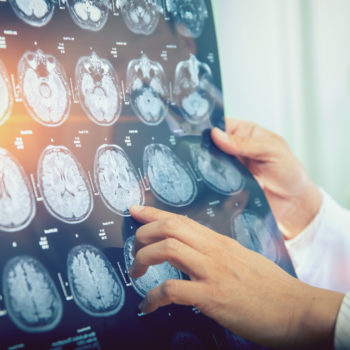Dyslexia is a specific reading disorder that manifests itself in school age when the child begins learning the written language. In this case we speak of a specific developmental disorder, i.e. the difficulty lies in the acquisition of the ability. Dyslexia can also be an acquired disorder, however, in a person who has acquired reading skills properly and who suffers a loss of these skills as a result of a brain injury. Speaking of dyslexia as a specific learning disorder, we can say that it affects 1 in 10 people in the world: about 700 million people suffer from this learning disorder that can make school life difficult, and not only for those affected. In Italy alone there are 1.9 million dyslexics, of which about 350 thousand are included in a diversified education. But what does dyslexia depend on? We talked about this topic with Dr. Paolo Amami, neuropsychologist at Humanitas, who also answered some questions.
Dyslexia: signals are present in the eyes
Guy Ropars and Albert le Floch, two French researchers, have tried to understand how people with this disorder approach reading and what changes in their visual perception. As the two scholars reported in a study published in the Proceeedings of Royal Society B, dyslexia could be hidden in the abnormal behavior of small cells in the retina that function as light receptors. While in people with normal learning these cells are arranged asymmetrically, so that signals sent by one eye can be ignored by the other to create a single image in the brain, in dyslexics the same cells are arranged in the same way in both eyes, i.e. in a perfectly symmetrical way, so as to produce mirror images that confuse the brain.
The experiments of Ropars and Floch
In dyslexics, the primary image is formed about 10 thousandths of a second after it is formed in normal subjects. Moreover, in the experiments of Guy Ropars and Albert le Floch, a different arrangement of the cones between dyslexics and the able-bodied subjects seems to emerge. In the dyslexic there is no dominant eye and this lack of asymmetry, in the end, could contribute to the difficulty of reading. Reading is in fact a complex mechanism in which perceptive, attentive and linguistic processes participate and currently there are different hypotheses, such as different forms of dyslexia, which place more or less emphasis on these different aspects.
The importance of child diagnosis
As already mentioned, dyslexia is not a disease, but a different way of learning. Its diagnosis is important to avoid children with this disorder having to deal with difficulties and psychologically harmful to try to overcome without a school program specifically designed for learning dyslexics. Therefore, even in this case, in the presence of signs that can make you imagine this disorder, it is good to rely on a specialist.
What are the signs that may indicate the presence of dyslexia?
“Dyslexia is a specific developmental disorder and manifests itself as a selective difficulty in reading words, so that the reading of the subject is not very accurate or fluent including spelling – said Amami. There is a certain cultural difference in that the disorder is more common in languages with opaque grammar (languages such as English, in which it is necessary to know the pronunciation of a word before being able to read it correctly) compared to transparent grammar (languages such as Italian in which, with rare exceptions, it is possible to read the words correctly even if you do not know their pronunciation first). The disorder can be diagnostic if the child has undergone an adequate education and if there are no delays in the general intellectual development.
At what age can it occur?
“Being a disorder of the acquisition of reading ability, obviously cannot occur before the child is exposed to this type of learning (therefore school age) – explained the specialist. It cannot occur later, by definition evolutionary dyslexia is a disorder of development, and therefore of learning ability, and it is implicit that the ability has never been acquired in an adequate manner. If there is a loss of ability (the subject knew how to read properly, now he is no longer able) we speak of acquired dyslexia and in this case it is due to a brain injury of any kind that affects the areas of the brain dedicated to reading.
Can symptomatology disappear or fade with age?
“If the disorder is not treated with the appropriate learning and rehabilitation techniques, the acquisition does not take place properly and therefore the difficulties of reading remain – concluded the doctor. In addition, present psychological symptoms, less propensity to reading in everyday life and school dropouts can also result. Obviously, it is necessary to diagnose and treat the children who have these types of disorders as soon as possible.










